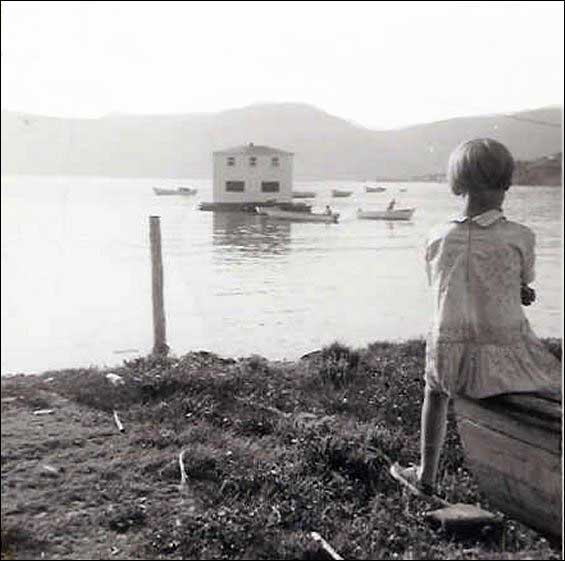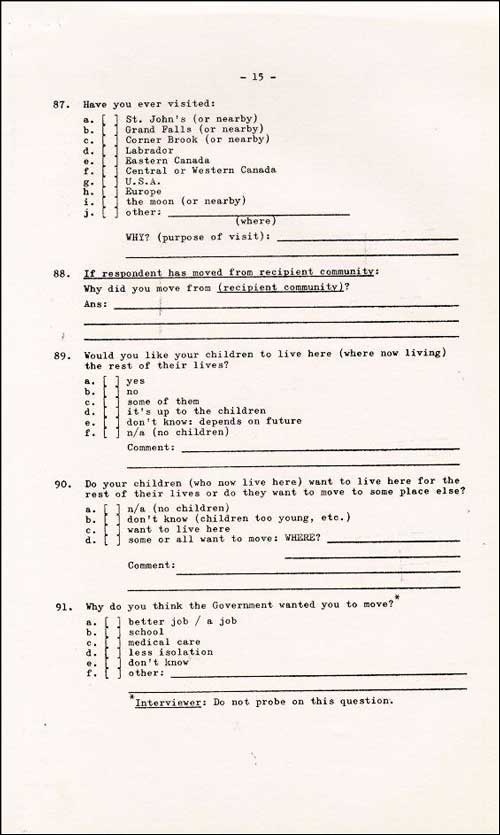Was Resettlement Justified?
Fifty years after the first centralization programme began, and over thirty years after it ended, resettlement still generates controversy and emotion. What tends to be remembered are divisions within families and communities, social dislocation, the loss of a way of life, and the abandonment of communities which, in some cases, had existed since the early days of European settlement. First raised by academic social scientists in the late 1960s, the question has been whether this experiment in social engineering was justified – in short, was the price paid by many individuals and families worth what was achieved?

The provincial and federal governments felt that centralization/resettlement was, in the long term, the best thing to do for rural Newfoundland and Labrador. By bringing the population into larger, less isolated centres, better public services could be provided affordably - such as healthcare, education, roads and electricity. Providing an adequate level of service to all of the 1,200 communities scattered along the coastline was impractical. Secondly, both levels of government agreed that the fishery had to be modernized. This implied reducing the large number of inshore fishermen still reliant on the traditional salt cod fishery, and encouraging the use of larger vessels and a fresh-frozen product.
Thus people were encouraged to move to ‘growth centres’ where they could find employment on the offshore draggers and trawlers, in the new fish plants, or in spin-off industries. This was to be the fishery of the future, with good wages and secure employment. Finally, resettlement would create pools of labour – a potentially mobile work force to supply the labour demands of the new industries and construction projects envisaged by the Smallwood government. Overall, then, resettlement was seen as a necessary component of the broader project to create a new, modern and prosperous Newfoundland and Labrador.
When the federal Department of Fisheries became involved after 1970, it began to commission research into resettlement almost immediately. It found that while resettlement addressed some of the serious structural problems facing rural Newfoundland and Labrador, the programme opened up a whole other set of difficulties.
A sentimental attachment to communities, homesteads, and lifestyles was to be expected. The ‘forced out’ feeling many resettlers talked about was also predictable, given the way in which communities had to form committees and sign petitions – an obviously contentious and divisive process. However, the most immediately problematic issue proved to be housing. How were those who resettled to find houses in their new communities? How could they afford them? For the elderly, widows, single mothers, the sick and the handicapped, the situation was particularly difficult.

Few of those who moved had the means to buy or build new dwellings, and the assistance offered for the move was usually insufficient. Where the move was a short one, it was common to float houses to the new destination. All the same, homes and personal possessions could be lost. The moving grant increased in time, but it was still difficult to accommodate families, especially large ones, who needed a lot of space. Eventually, it became possible for families to apply for additional housing assistance up to $3000 (in the form of a guaranteed mortgage) once they had relocated to government designated areas. For many resettlers, this just increased a financial burden they had not experienced before.
Some of those who resettled described difficulties associated with the move. They regretted the loss of their previous, more self-sufficient lifestyle, and there is no question that families could be financially and economically worse off after the move than before, especially if steady employment was hard to find. On the other hand, there were those who, on balance, were satisfied with their decision to move. Such families appreciated better education for their children, more job opportunities and better healthcare services, as well as an end to isolation. The traditional fishery was in decline, and many were glad of the opportunity to move on. For some it meant the end to reliance of welfare and other forms of government assistance.




